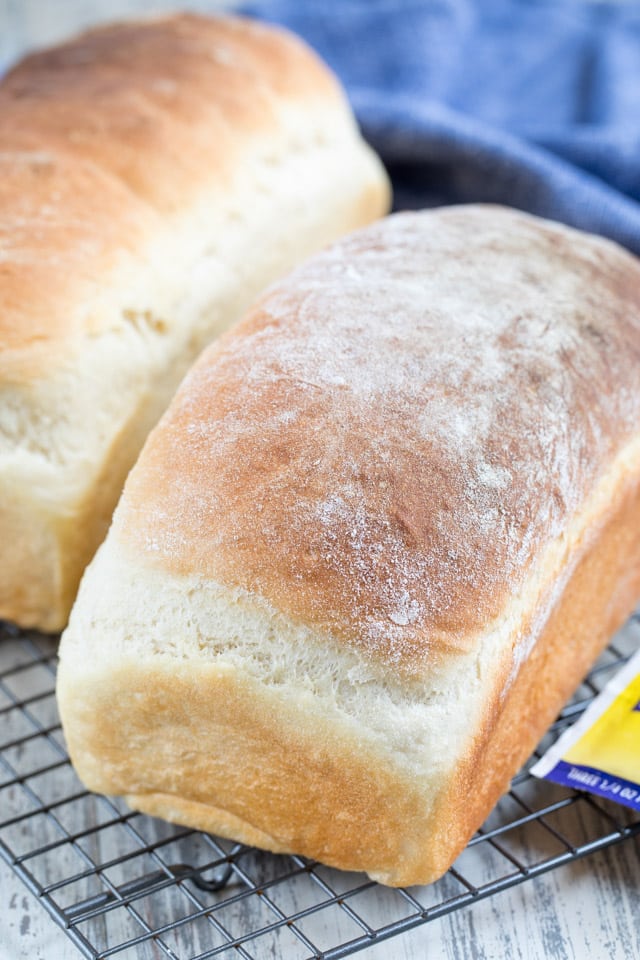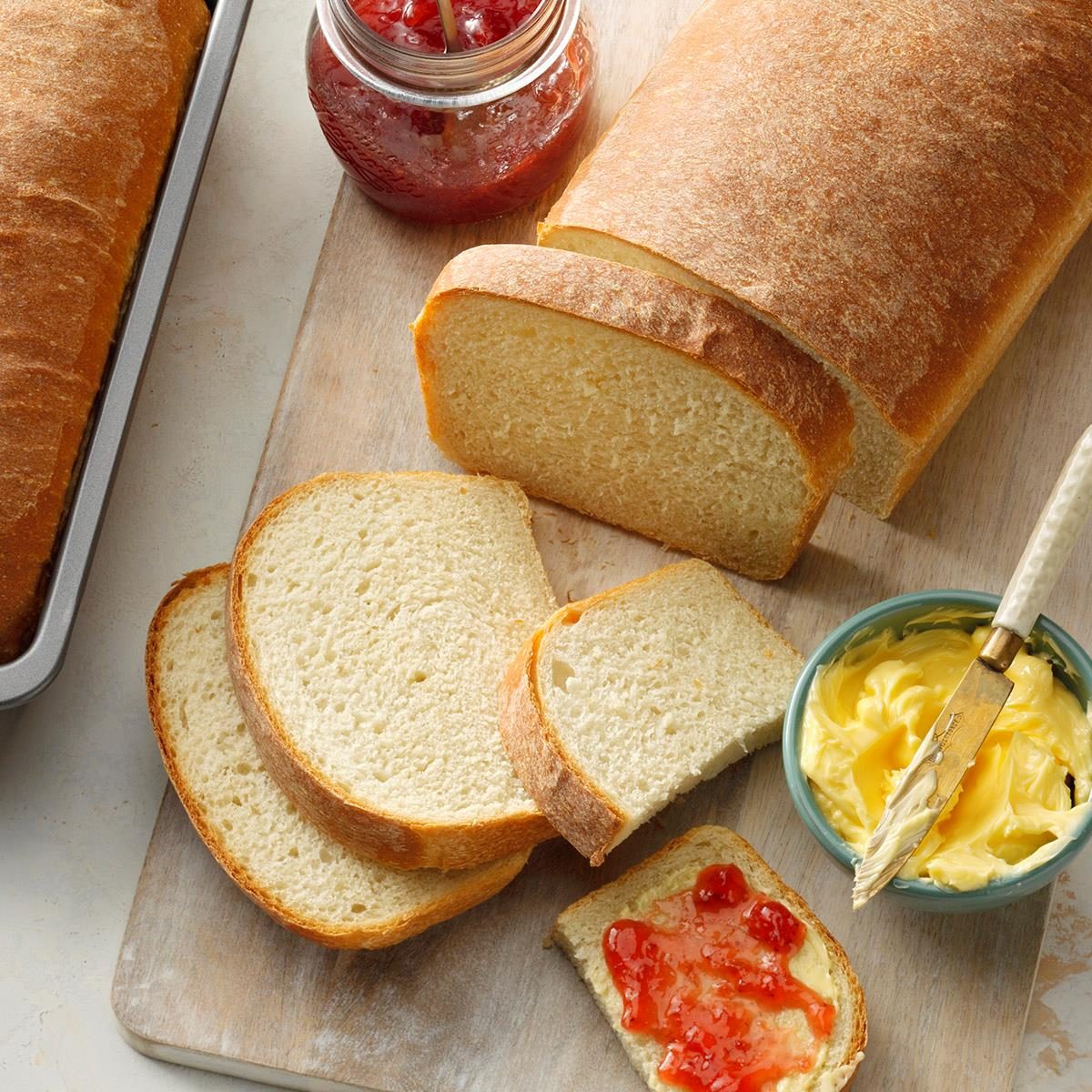How To Make Simple Homemade Bread: A Comprehensive Guide

Imagine the aroma of fresh baked bread wafting through your kitchen, the golden crust glistening under the light, and the soft, pillowy interior just waiting to be slathered with butter. There's something deeply satisfying about baking your own bread, and it's easier than you might think. Whether you're a seasoned baker or a novice looking for an easy bread recipe, this guide on simple homemade bread recipes will have you pulling a perfect loaf out of the oven in no time.
Why Bake Your Own Bread?
Baking your own bread is not just a rewarding culinary experience; it's also a way to ensure you know exactly what goes into your food. Store-bought bread often contains preservatives and additives that you might prefer to avoid. By making your own, you can control the homemade bread ingredients, ensuring they are fresh and wholesome. Plus, there's nothing quite like the sense of accomplishment that comes from creating something delicious from scratch.
Simple Homemade Bread Recipes: The Basics
Homemade Bread Ingredients
Before we dive into the recipe, let's talk about the essential homemade bread ingredients. You'll need:
- All-Purpose Flour: The foundation of your bread.
- Yeast: The leavening agent that makes your bread rise.
- Sugar: To feed the yeast and add a touch of sweetness.
- Salt: To enhance the flavor.
- Water: To bring it all together.
- Oil or Butter: For a richer flavor and softer crumb.
Essential Bread Baking Tips
- Use Fresh Yeast: Ensure your yeast is fresh and active. Old or expired yeast can result in a dense, unrisen loaf.
- Proof Your Yeast: Mix the yeast with warm water and a bit of sugar before adding it to the flour. This step ensures the yeast is active.
- Knead Properly: Kneading develops the gluten, which gives your bread its structure. Knead until the dough is smooth and elastic.
- Let It Rise: Allow your dough to rise in a warm, draft-free place. This step is crucial for a light, airy loaf.
- Preheat Your Oven: A hot oven ensures a good rise and a crispy crust.
Simple Bread Making: Step-by-Step Guide
Ingredients
- 3 cups all-purpose flour
- 1 packet (2 ¼ teaspoons) active dry yeast
- 1 tablespoon sugar
- 1 teaspoon salt
- 1 cup warm water (110°F - 115°F)
- 2 tablespoons oil or melted butter
Instructions
Activate the Yeast
- In a small bowl, mix the warm water, sugar, and yeast. Let it sit for about 5 minutes until the mixture becomes frothy. This step is crucial as it ensures your yeast is active and ready to work its magic.
Mix the Dough
- In a large bowl, combine the flour and salt. Make a well in the center and pour in the yeast mixture and oil or butter. Stir until a shaggy dough forms.
Knead the Dough
- Turn the dough out onto a lightly floured surface and knead for about 10 minutes. You'll know it's ready when the dough is smooth and elastic. Think of it like working with clay—the more you knead, the more pliable it becomes.
First Rise
- Place the dough in a greased bowl, cover it with a clean kitchen towel, and let it rise in a warm, draft-free place for about 1 hour, or until it has doubled in size. This is where the yeast does its work, creating tiny bubbles of carbon dioxide that make your bread light and airy.
Shape the Dough
- Punch down the dough and shape it into a loaf. You can place it in a greased loaf pan or shape it into a round on a baking sheet. Let it rise again for about 30 minutes, until it has almost doubled in size.
Bake the Bread
- Preheat your oven to 375°F (190°C). Bake the bread for about 30-35 minutes, or until the top is golden brown and the loaf sounds hollow when tapped on the bottom.
Cool and Enjoy
- Remove the bread from the oven and let it cool on a wire rack. Resist the temptation to cut into it right away—letting it cool allows the internal structure to set, resulting in a better texture.
Troubleshooting Common Bread Baking Issues
Even with the simplest of recipes, things can go awry. Here are some common issues and how to fix them:
- Dough Didn't Rise: Your yeast might be old, or the water was too hot or too cold. Make sure your yeast is fresh and the water is between 110°F and 115°F.
- Bread Is Too Dense: You might not have kneaded the dough enough, or it didn't rise properly. Ensure you knead until the dough is smooth and elastic, and give it enough time to rise.
- Crust Is Too Hard: Overbaking can result in a hard crust. Keep an eye on the baking time and consider covering the bread with foil if it starts to brown too quickly.
Variations on Simple Homemade Bread Recipes
Once you've mastered the basic recipe, feel free to experiment with different flavors and add-ins. Here are a few ideas:
- Herb Bread: Add a tablespoon of dried herbs like rosemary, thyme, or oregano to the dough.
- Cinnamon Raisin Bread: Mix in a teaspoon of cinnamon and a handful of raisins for a sweet twist.
- Whole Wheat Bread: Substitute half of the all-purpose flour with whole wheat flour for a healthier option.

Conclusion
Baking your own bread is a rewarding experience that results in a delicious, homemade loaf. With these simple homemade bread recipes and bread baking tips, you'll be well on your way to becoming a bread-making pro. The satisfaction of pulling a fresh baked bread out of the oven is unmatched, and the taste is simply unbeatable. So, why not give it a try? Your kitchen (and your taste buds) will thank you.
Happy baking!
FAQs
What is the best type of yeast for homemade bread?
- Active dry yeast is commonly used and widely available. Instant yeast is also a good option as it doesn't require proofing.
Can I use a bread machine for this recipe?
- Yes, you can adapt this recipe for a bread machine. Simply add the ingredients in the order recommended by your machine's manual and select the basic bread cycle.
How do I store homemade bread?
- Store your bread at room temperature in a plastic bag or airtight container. It will keep for about 3-4 days. For longer storage, you can freeze it.
Can I make this bread gluten-free?
- Yes, you can substitute the all-purpose flour with a gluten-free flour blend. However, the texture and rise may vary, so you might need to adjust the liquid content.
What can I do with leftover bread?
- Leftover bread can be used to make croutons, breadcrumbs, or even a delicious bread pudding. Don't let it go to waste!
0 Response to "How To Make Simple Homemade Bread: A Comprehensive Guide"
Post a Comment